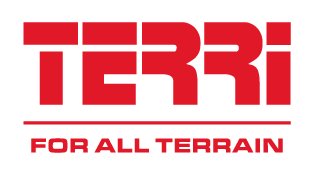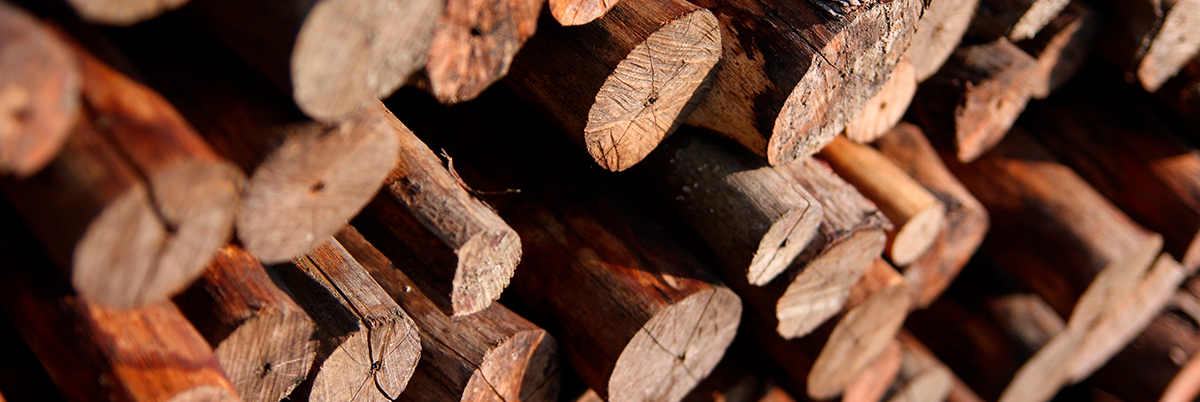TERRI History
The first Terri 30 1971-1980
It all started when Valmet began building the first prototype in Helsinki, Finland.
It was completed and introduced in 1972. It resembled a tracked vehicle that looked like an overgrown snow scooter without skis, but instead two tracks.
It was maneuvered with a steering variator that moved the tracks in different speed in order to turn the machine.
The gearbox had two gears forward, one backward and a built-in winch to recover either yourself or somebody else. The winch was relatively strong for such a small machine.
In 1973, Terri 30 was moved to Valmet in Linnavuori, Finland, where 15 machines were manufactured from one prototype. That was when the production of Terri 30 really begun. First, with a series of 200 machines, then with a series of 300 machines.
In 1975 the production was moved to the Velsa affiliate in Kurikka, Finland, where the serial production continued. Velsa already manufactured Lynx snow scooters, and Terri and Lynx seemed to be a good match production wise. When Valmet bought a factory in Rovaniemin, the production of both the Lynx snow scooters and Terri was moved there, and the Nordtrac affiliate was created.
Between 300-400 copies of Terri 30 were manufactured during 1975-1980. All in all, a total of 900 copies of Terri 30.
Terri 30 was manufactured with three different engines. Kohler, Sachs and Rotax. They were all two-strokes gas engines like in the snow scooters.
Terri 30 became an instant success and the name TERRI, therefore, a concept.
Terri 1000 1981-84
Terri 1000 was launched in 1981. It was a huge step in the progress: a complete carriage with a tractor and a wagon. It was steered with articulated steering between the tractor and the wagon, but could also be run as a single without the wagon, with a steering variator, like Terri 30.
Kubota 850D was a much appreciated diesel engine, both fuel-efficient and reliable. The wagon had a frame with a bogie and was delivered either with or without tracks. In the beginning it was delivered either without a loader, or just with a simple wire crane, which later was substituted with a hydraulic log loader.
Terri 1000 was sold to all types of customers, from independent forest owners to forest companies and electric power companies.
Even the large forest managements embraced the concept of Terri. So the concept of a machine that could be used in muddy water was created already in the early 1980ies
Terri 1020 1984-1987
The progress continues. Although Terri 1020 looks more or less like its predecessor, a lot has happened. The waist is heavier and equipped with double steering cylinders and a tilt cylinder to lock the waist joints.
The gearbox has changed and the steering variators are gone. The front winch is left intact, though. The wagon is of central tube model. The hydraulic log loader is kept and equipped with supporting legs.
The progress continues and they machines are delivered in different design, some with windshield, some with roof, and the latter with an additional cabin.
A few machines are sold abroad to countries that are heading on different expeditions to the South Pole.
Terri 1020 is a simple but reliable “buddy”. When countless hunters, that planned to follow a Terri to the bog to bring home a moose, discovered that their boots were not good enough, the Terri quickly turned around and picked up the hunter first, then the moose.
Terri 2020 1988-1992
2020 is the second generation of Terri.
The machine has grown and is equipped with a brand new gearbox from Sisu Gears, a part of Valmet. The front winch is intact and a cabin with even floor and a pivotal chair is now standard. In order to bring down the center of gravity, the hydraulic oil and diesel tanks are lowered into the chassis.
Also the wagon is slightly larger, so a log loader of 4,2 (13,7 ft) meters is constructed. The machine is, however, imported to Sweden without the loader. The loaders assembled in Sweden originated from either Lima or Mowi.
The engine is still a Kubota, but now labeled 850DH. This other kind of metal injector resulted in approximately 2 more horsepower than its predecessor.
Since many Terri-owners had commented on the importance of propulsion on the wagon, the Swedish importer designed a hydraulic support propulsion. A specific set was created, and it was to be assembled onto the machine by the Swedish importers or retailers. The same set of tools was then sold to a number of Terri 1020, which resulted in the creation of hydraulic wagon propulsion at the factory in Finland. This was built with a separate driving wheel as seen on the loader. Sweden continued with the propulsion system for the wagon. A couple of the factory models were sold in Finland and Germany, before they finally ceased to manufacture the model 2020.
Besides Europe, there are Terri 2020s in Russia, Canada and the States.
Terri 2040 1992-1996
The machine was now equipped with a hydraulic propulsion. Since everything has a need to grow, so does Terri. 2040 did not turn out to be bigger, but it had a larger engine, a Kubota 1105D.
The gearbox is built of the same house as in 2020, but with enhanced bearing and gear wheels. After removing the reverse gear, there was enough space.
“Real” wagon propulsion was provided, one that harmonized with the loader. A complete and closed drive system was designed, built as the one on 2020, but with a separate driving wheel in front of the wagon’s bogie wheels.
The loader was equipped with double pivot cylinders in the pivot engine. The Swedish market now used the same crane.
1995.
Terri becomes Swedish.
Valmet sells 50 % of the Lynx factory, Nordtrac, to Bombardier. Terri does not seem to fit into the production of snow scooters anymore. Hence, they decide to sell Terri. They approached Alcab, a former Swedish importer of Terri. Alcab was definitely interested, and so on 2 January 1995, Terry became a Swedish machine. The production and spare part warehouses were moved from Rovaniemi to Heby in Sweden. The Terri 2040 is manufactured for another year and a half, and the development of the next model starts immediately.
38 Terri 2040 was produced in Sweden.
Terri ATD 1996-2008
The production increased and the new model, ATD, was launched. Its three-wheel bogie on the wagon made the tracks longer and lowered the ground pressure. This made the wagon more stable and enabled it to move easily across irregularities in the terrain. The wagon was bigger, a whole of 170 cm (5,5 ft) wide.
The Mowi log loaders were introduced as a standard, and have been much appreciated ever since. The first ATDs still had Kubota 1105D, but it soon became clear that more engine power was needed. Lombardini 1404, with its around 40 hp, turned out to be the right choice. The gearbox from 2040 was kept as it was.
In connection with an Austrian project, there was a need for higher ground clearance; this due to the height of the stumps on the hills. The ground clearance was heightened with 10 cm (0,3 ft), and since the demand for the lower version quickly lessened, the new one became standard. Terri ATD was now geared more towards professional users.
The 122 manufactured machines were sold to Sweden, Norway, Finland, Estonia, Russia, Germany, The Czech Republic, South Korea, Portugal, Spain, Switzerland, and Austria.
Terri is a well-known concept, not only in Sweden and the Nordic region, but all around the world.
Terri 34 2009-
When it was time to launch a new model after Terri ATD, there were a few demands on the armament. The gearbox had to go, since it had caused concern. In order to increase the stability and the loading area, slightly wider wagon and loader were suggested.
The three-wheel bogie on the ATD wagon, a true success, was also used for the loader. This enhanced the driver’s comfort. The cabin was also slightly prolonged and strengthened, and the roof heightened for better vision. A three-wheel bogie on the loader made the waist num, which further enhanced the driver’s comfort.
The customers had long wanted to be able to use harvester units with the Terri. This did, however, require more engine power; a diesel engine with about 60 hp, to be exact. This was the amount of power that was necessary in order to pull a machine of 8,5 tons (18,700 lb). The choice stood between Kubota and Perkins. A waist lock instead of supporting legs seemed to be a better solution, too. Combining these measures with a 5,7 m (18,7 ft) loader definitely increased the productivity.
Considering that the machine is built for professional use, it has to be easy to overhaul. Screens on the chassis would only be in the way, for instance, when tightening the screws in the tracks.
Loose tanks are lowered into the chassis and the hydraulic system is put on top. With a tilted cabin and an open engine hood it is now easy to complete most of the serving.
This will become a whole new generation of Terri.

